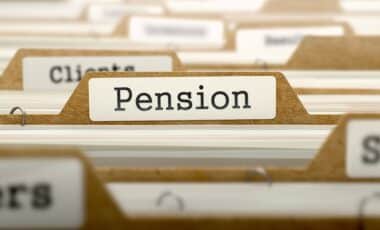A modest adjustment is on the horizon for thousands of benefit recipients across the UK. Set to take effect in April 2025, changes are scheduled within a long-standing welfare program that supports individuals with health conditions or disabilities affecting their employment prospects.
According to Manchester Evening News, the update stems from regular government measures linked to inflation trends and will affect various payment categories.
While the confirmed figures remain consistent with expectations, the broader implications for claimants—new and existing—are tied to ongoing shifts in the benefits landscape.
Full details from the Department for Work and Pensions (DWP) are now beginning to emerge.
What Is Employment and Support Allowance
ESA is a benefit provided to individuals whose health condition or disability limits their capacity to work. It offers both financial aid and tailored employment services such as coaching, training access, and condition management.
There are two primary forms of ESA : New Style ESA, a flat-rate contributory benefit linked to National Insurance (NI) contributions, and the now-legacy income-related ESA, which is gradually being phased out and replaced by Universal Credit (UC).
While most new claimants now access ESA via the contributory route, individuals who receive Universal Credit may still qualify for New Style ESA if they meet contribution requirements. In such cases, the amount of UC received is reduced by the value of any ESA entitlement.
Eligibility and Structure of Esa Claims
To qualify for ESA, applicants must be under the State Pension age, have a medical condition or disability that limits their ability to work or engage in employment, and must not be claiming Statutory Sick Pay or Jobseeker’s Allowance. Eligibility for New Style ESA also depends on sufficient National Insurance contributions during the two complete tax years prior to the year of the claim.
ESA claims begin with an initial 13-week assessment phase, during which recipients receive a basic weekly allowance. This amounts to £71.70 if under 25 and £90.50 if 25 or older.
If the assessment takes longer than 13 weeks, the same rate continues to apply until a decision is made. Once the assessment is complete, claimants are placed into either the work-related activity group or the support group, depending on whether they are deemed capable of returning to employment in the future.
Those nearing the end of life are automatically placed into the support group.
From 2025, upcoming changes to the Work Capability Assessment (WCA) are expected, including revisions to the Limited Capability for Work-Related Activity (LCWRA) and the way substantial risk regulations are applied.
These reforms are part of a wider DWP strategy aimed at refining support for those with long-term health conditions.
Updated ESA Rates From April 2025
As of April 2025, ESA personal allowances will rise slightly. For individuals under 25, the weekly rate will increase from £71.70 to £72.90. For those aged 25 and over, and for lone parents 18 or over, the rate will move from £90.50 to £92.05.
Similar adjustments apply to lone parents under 18, who will also see an increase to £72.90.
For couples, the new weekly rates depend on their age and circumstances. For instance, both partners under 18 will now receive £72.90, rising to £110.15 if they have a child. If both partners are under 18 and in the main phase, the amount increases from £90.50 to £92.05, or from £142.25 to £144.65 if they have a child.
Couples with one member aged 18 or over and one under 18 will also receive £144.65 under certain conditions. When both partners are over 18, the rate increases from £142.25 to £144.65.
A claimant under 25 with a partner under 18 will receive £72.90, while one aged 25 or over with a partner under 18 will receive £92.05. In the main phase, a claimant with a partner under 18 also receives £92.05.
Various premiums are also rising. The enhanced disability premium for single claimants increases from £20.85 to £21.20, and from £29.75 to £30.25 for couples.
The severe disability premium for single claimants goes from £81.50 to £82.90, while couples receiving the lower rate will also see the same increase. Couples eligible for the higher rate will now receive £165.80, up from £163.00. The carer premium will rise from £45.60 to £46.40.
Pensioners receiving ESA also see adjustments. A single pensioner with a work-related activity component will now get £98.50 per week, up from £91.70. Those with a support component will see their rate rise from £79.95 to £86.55, and those with no component will receive £135.05, up from £127.65.
For couples, work-related activity component payments will increase from £154.75 to £165.40, while those with a support component will now get £153.45, and couples with no component will see their rate increase from £190.70 to £201.95.
The work-related activity component increases from £35.95 to £36.55, and the support component rises from £47.70 to £48.50.
Deductions, Overlaps, and Transitional Rules
ESA is typically paid every two weeks. If a claimant receives more than £85 per week from a private pension, half of the amount over £85 is deducted from their ESA.
For example, someone earning £100 weekly from a private pension would see £7.50 subtracted from their ESA entitlement. If private pension income is high enough, ESA payments may cease altogether.
However, these individuals still earn Class 1 National Insurance credits, which count toward their future State Pension, employment-related entitlements, and other benefits.
Notably, when a person switches from income-related ESA to Universal Credit, the DWP automatically continues their existing ESA amount for two weeks.
This transitional payment does not need to be repaid and does not impact the level of Universal Credit awarded.
Additional Support and Benefit Interaction
Individuals may be eligible to receive other support alongside ESA, such as Personal Independence Payment (PIP). Furthermore, recipients of income-related ESA for at least six months may qualify for a Budgeting Loan.
The overall benefit cap may affect total payments unless the individual is in the support group, in which case they are exempt from the cap.
Claimants can also seek money advice or debt support through various non-governmental organizations. Help is available from Citizens Advice, MoneyHelper, National Debtline, Shelter, and Turn2us. Additionally, local Jobcentre Plus work coaches can provide further guidance.









